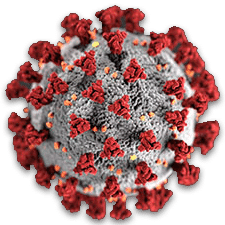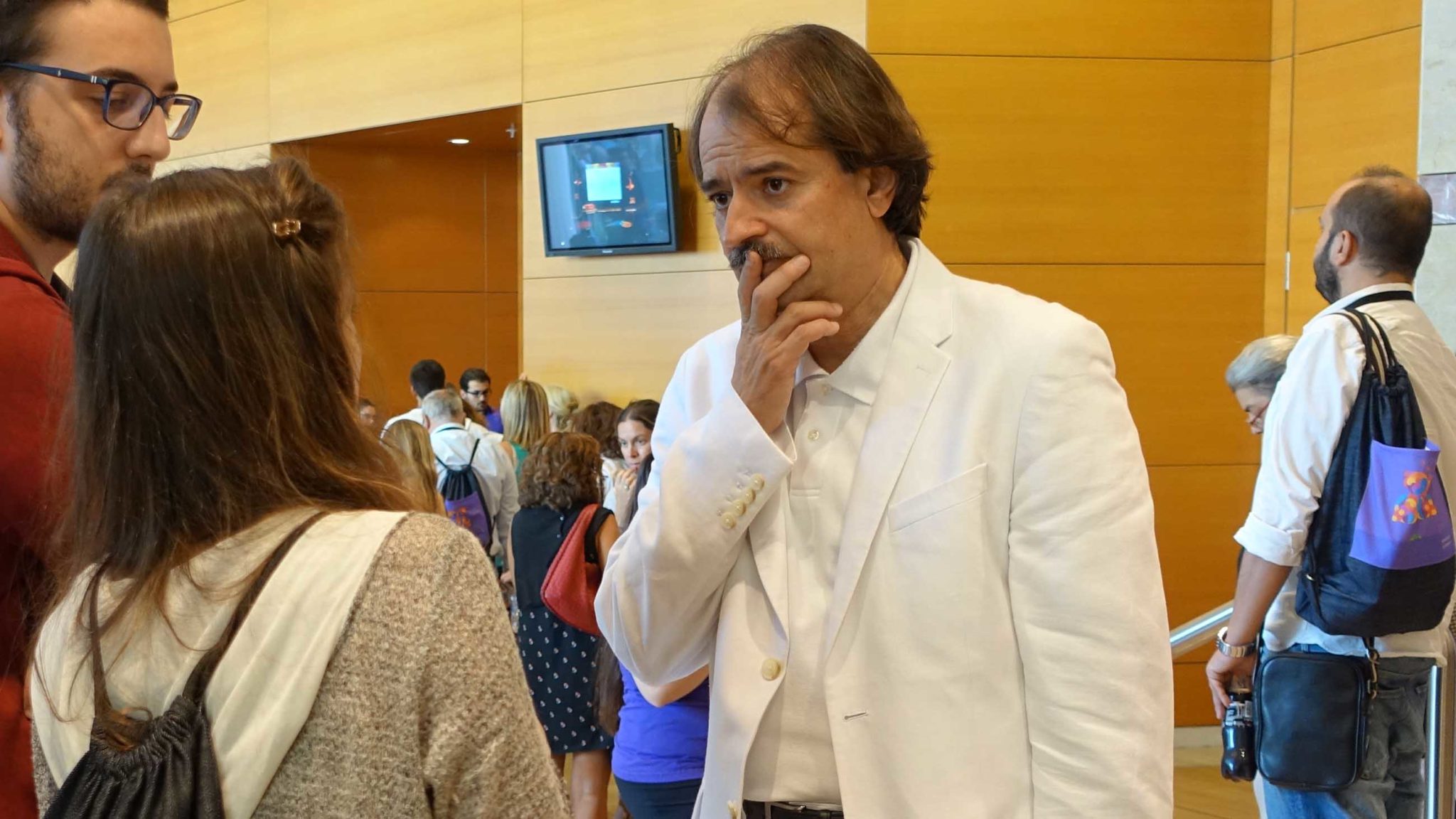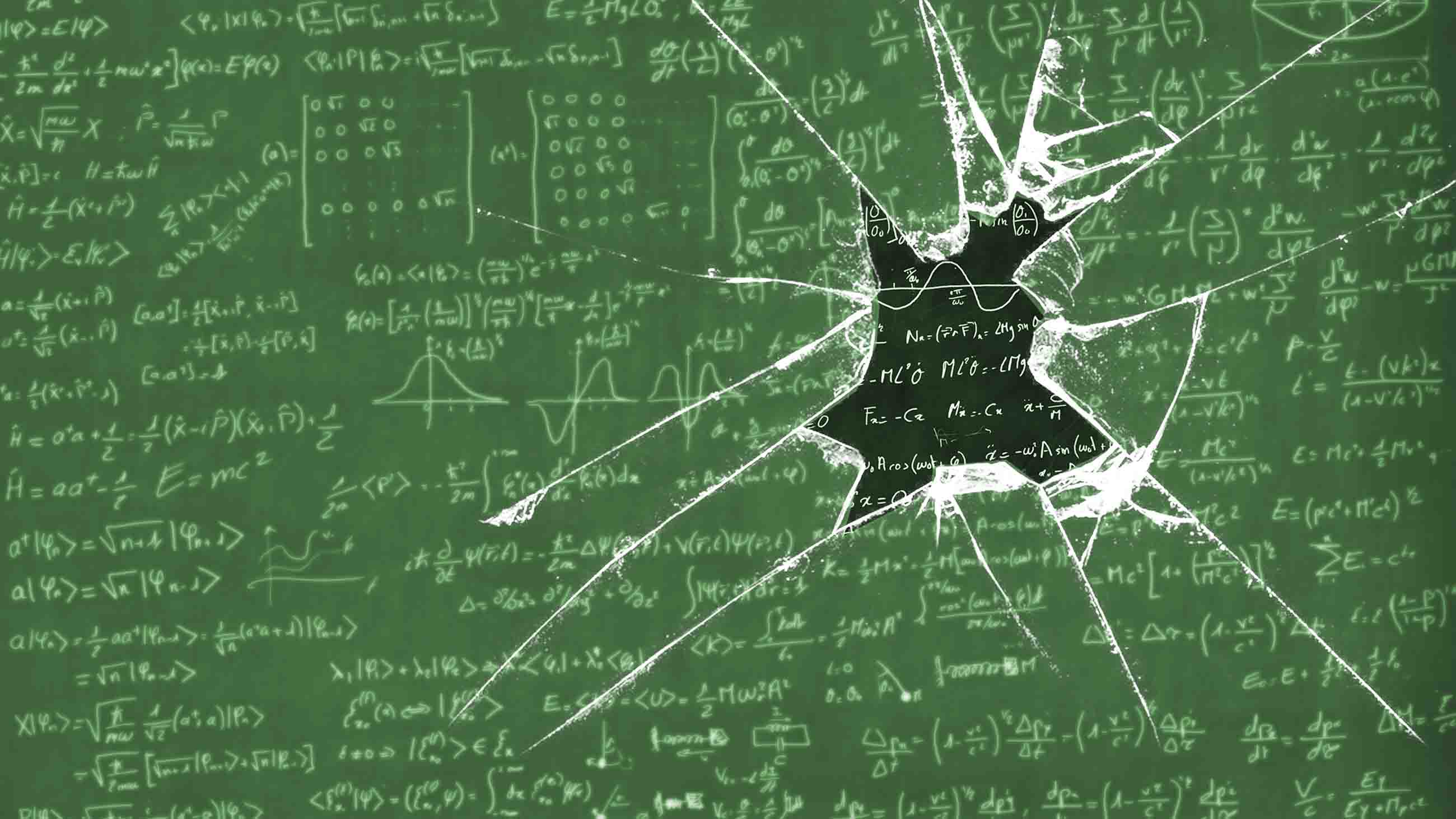On Covid-19, a Respected Science Watchdog Raises Eyebrows
Over the past two decades, John Ioannidis, a professor of medicine, epidemiology, and population health at Stanford University, has gained a reputation as a widely respected gadfly of global science. His work consistently highlights flaws in research methods, pushing scientists and physicians to be more rigorous in evaluating and applying evidence. Ioannidis’ most famous paper, “Why Most Published Research Findings Are False,” has been downloaded millions of times and cited in thousands of other studies since its publication in 2005. A 2010 profile in The Atlantic stated that “Ioannidis may be one of the most influential scientists alive.”
Ioannidis’ latest work, though, has sparked pushback from many of his colleagues, with some suggesting that the researcher may be succumbing to the very sloppiness he has spent his career fighting. Since mid-March, Ioannidis has been arguing that the fatality rate of Covid-19 may be much lower than initially feared — and that, as a result, current public health restrictions could be overly strict. Last week, a Stanford-led study of Covid-19 infection rates in Santa Clara County, California, which lists Ioannidis as an author, seemed to offer some of the most forceful backing for that argument. The paper suggests that the fatality rate for Covid-19 may be 0.2 percent or less — lower than many other estimates, and much closer to the seasonal flu.
These arguments have earned Ioannidis widespread attention in conservative media, where many commentators are skeptical of the overall risk of Covid-19, and critical of the restrictions currently in place across much of the world.
In the past week, though, the Stanford study, and a related effort in Los Angeles, have come under fierce criticism from prominent statisticians and infectious disease experts. Critics have argued that statistical sloppiness, inaccuracies in testing, and a skewed survey method likely warped the results. Some critics have also expressed surprise that Ioannidis was involved in the Santa Clara study at all.
“My quick take is that something really odd is going on with Ioannidis,” wrote Alexander Rubinsteyn, a geneticist and computational biologist at the University of North Carolina at Chapel Hill, in an email to Undark. Rubinsteyn suggested that Ioannidis may simply be “so attached to being the iconoclast that defies conventional wisdom that he’s unintentionally doing horrible science.”
He added: “Pretty much no one with statistical acumen believes these studies.”
For his part, Ioannidis did not respond to multiple attempts, made over several days, to reach him for comment by email and phone. Shortly after this story was published, however, he emailed Undark to express gratitude to his critics. “We have been working very hard to address all the comments raised by many colleagues and I am always grateful to receive constructive criticism,” he said. “While we received thousands of congratulations for this work, I cherish far more the comments of the scientists who criticized our work and I thank them deeply for their comments.”
At issue is a single, elusive question: How many people infected with the SARS-CoV-2 virus actually die from the disease?
Widely circulated figures early in the pandemic suggested that Covid-19 was killing as many as 3.4 percent of its victims, according to an estimate from the World Health Organization. Such numbers are derived by simply dividing the number of dead by the total number of reported cases.
The problem, of course, is that many people who get Covid-19 are asymptomatic and never realize they are sick. Others may be unable to get a test, amid widespread testing shortages. As a result, one of the lingering questions of the pandemic has been how many people actually have the disease. If a larger number of people are getting infected but presenting with symptoms so mild or nonexistent that they never feel the need to be tested, then the overall infection fatality rate — that is, the percentage of infected people who die — will be considerably lower.
Such downward adjustments in the death rate of a pandemic are entirely common, as researchers and clinicians get a better grasp on how a contagion behaves. And of course, if the fatality rate for Covid-19 drifts closer to that of the common flu, some people might question whether strict lockdowns are warranted. The question, though, is whether there is enough good information on hand yet to make that case.
In an essay published by STAT in mid-March, Ioannidis himself bemoaned the lack of testing and data for Covid-19. But he also argued that it was possible that, if we had not discovered the new virus, the additional deaths it has caused may have gone largely unnoticed. And in the absence of clear information about the fatality rate of Covid-19, he suggested, long-term lockdowns could be too hasty. “If we decide to jump off the cliff, we need some data to inform us about the rationale of such an action,” he wrote.
Not all epidemiologists agreed. “Ioannidis doing his schtick about standards of evidence is not helpful. Everyone knows we’re acting with little or partial information,” wrote Yale epidemiologist Gregg Gonsalves in a Twitter thread. “We all want better data. But if you don’t have it. Do you sit and wait for it in a pandemic?” Marc Lipsitch, director of Harvard’s Center for Communicable Disease Dynamics, suggested that dwelling on the ambiguities of data collection might be missing the point at a time when, amid a surge in Covid-19 deaths, corpses were piling up in churches in Italy.
The debate intensified late last week when Ioannidis and 16 colleagues released a draft of their new paper estimating the prevalence of Covid-19 cases in Santa Clara County, California.
 |
Thoughts or questions on Covid-19? |
Using Facebook ads, the team recruited 3,330 people in Santa Clara County, California, and invited them to receive a serology test for Covid-19. Instead of looking for the presence of the virus itself, a serology test identifies the unique antibodies that the immune system produces when it encounters the SARS-CoV-2 virus. Those antibodies linger and, as a result, the tests can identify people who were sick and then recovered, and it picks up on invisible, asymptomatic infections, too.
The research team tested people at three drive-in sites in the county, staffed by volunteers – including many Stanford graduate students – who had responded to emails offering a chance “to get involved with an unprecedented study that will help direct ongoing local and national Covid-19 policy!”
Of those 3,330 people, 50 tested positive. Extrapolating from that result to the entire population of the county, the researchers estimated that 50- to 85-times as many people had been infected in the county as previously estimated. Given this, they posited, the actual fatality rate of Covid-19 in the county was probably closer to 0.12 to 0.20 percent of cases. The typical rate for the flu is around 0.10 percent, although estimates vary, and some suggest an even lower fatality rate.
Still, if the results of the Santa Clara study were true, this would suggest that the SARS-CoV-2 virus is considerably less deadly than once feared, and that lockdowns, perhaps, are necessary only for the most vulnerable populations — particularly elderly people.
The study was released, like many other Covid-19 studies, as a preprint, meaning it had not yet received peer review vetting from other scientists. And it quickly came under criticism from other researchers, who eviscerated its methods on Twitter and in an online forum. (Two senior authors on the paper, Eran Bendavid and Jay Bhattacharya, did not respond to requests for comment.)
“The Stanford study was not a true random sample,” said Prabhat Jha, an epidemiologist at the University of Toronto, in an email to Undark. In addition, he said, “their testing was flawed, so they might have many false positives.” In particular, Jha and others have questioned whether recruiting samples from a Facebook ad, rather than something closer to random selection, may have skewed the results, perhaps by selecting for people who had already shown Covid-19 symptoms and wanted to see if they had antibodies, or who have a higher socioeconomic status. The preprint acknowledges these limitations as well.
Because of the potential for false positives, there’s also a chance the 50 positive tests could have been mostly statistical noise, rather than a meaningful result. If that were the case, the true number of infections in the county would be lower, and in turn the infection fatality rate would be higher — and perhaps more in line with what other influential studies, with estimates closer to 0.5 percent and above, have suggested.
Still, the Stanford team’s findings are not complete outliers, and they have pointed to other research from Germany and the Netherlands that found similar results. The issue, suggested Andrew Gelman, a statistician at Columbia University who criticized the research team for statistical errors in a post on his popular blog, is that the team is getting out in front of what the data are showing. “It’s not like I’m saying they’re wrong, and someone else is saying they’re right. It kind of comes out that way, but it’s like, yeah, I think their conclusions were a bit strong,” Gelman said. “I think they have reasons for believing what they believe beyond what’s in this paper. Like they have their own scientific understanding of the world, and so basically they’re coming into it saying, ‘Hey, we believe this. We think that this disease, this virus has a very low infection fatality rate,’ and then they gather data and the data are consistent with that.
“If you have reason to believe that story, these data support it,” Gelman added. “If you don’t have such a good reason to believe that story, you can see that the data are kind of ambiguous.”
The propriety of the Stanford analysis was called into further question on Friday when BuzzFeed News reported that Bhattacharya’s wife had sent a message to a middle school’s private email list to recruit families for the study. It included the claim that the testing would help determine if they could “return to work without fear,” raising additional concerns of bias in the sample population.
The Stanford data also do not seem to match up with observations in other, more hard-hit parts of the country. In New York City, for example, an estimated 15,400 people have died from Covid-19, according to figures from the city’s health department. While death rates may vary from place to place, if the fatality rate of Covid-19 is as low as 0.12 percent, as the Stanford study authors claim, this would suggest that more than 12.5 million people in New York City have already been infected with Covid-19, even though only 8.3 million people live there.
A. Marm Kilpatrick, an infectious disease ecologist at UC-Santa Cruz and a vocal critic of the study, summed up his thoughts in an email: “They completely ignore the data from N.Y.”
In the week after the study’s release, Ioannidis has made the rounds on Fox News, appearing on Tucker Carlson’s show and on “The Ingraham Angle,” hosted by Laura Ingraham. (Bhattacharya, a former research fellow at the politically conservative Hoover Institution, has also appeared on Carlson’s show talking about Covid-19 death rates). Last Sunday, Ioannidis was also on the Fox News show “Life, Liberty, and Levin,” to talk about why he thought the Covid-19 risk had been overstated. As host Mark Levin criticized the widespread lockdowns and questioned the media’s reporting on Covid-19 data, Ioannidis praised the public health response. “We had to base our decisions on whatever we had, and I think we did the right thing to act decisively and urgently,” he said. But he also challenged estimates of the disease’s danger.
“The best data that we have now suggests that it’s not one out of 30 or one out of a hundred people who get infected who will die. It’s probably in the range of one in a thousand,” Ioannidis told Levin, citing numbers that would put Covid-19 in the same fatality range as a typical case of influenza. “We also know that there’s some types of people who are at much higher risk than others.”
“Most of the population has minimal risk,” he added, “in the range of dying while you’re driving from home to work and back.”
When Undark ran that statement by several public health experts, all of them expressed skepticism. That “claim might well be true,” Jha said, “but their data are not sufficiently definitive to make their claim.”
In a telephone interview, Cecília Tomori, director of global public health and community health at the Johns Hopkins School of Nursing, echoed that sentiment. “The question of making sure we have the best evidence to make decisions is a valid one,” she said. “But I think that there’s something else when we question some of the empirical reality of how awful this disease has been. And I think that’s really what’s going on.”
Along with Ioannidis’ piece in STAT, Bendavid and Bhattacharya had published their own op-ed in The Wall Street Journal, before conducting the study, questioning whether the Covid-19 quarantines were overreactions. This has led some critics to question the authors’ motives. “The fact that Ioannidis and another author had published two articles … arguing that the threat of Covid-19 was overblown, and then published a study that was done in a way that was likely to produce a spuriously high estimate of seroprevalence (and thus a low [infection fatality rate]) was worrisome,” wrote Kilpatrick.
Accusations of biased sampling and sloppy methods have also disappointed some Stanford students who volunteered to collect samples for the study. Maria Filsinger Interrante, an MD/Ph.D. student at Stanford, is currently working long hours in the lab helping develop potential vaccines for the virus. But she spent 10 hours on a Saturday in early April helping to draw blood for the Stanford study. “If you want to prove to the world that the seroprevalence rate is higher, those are things that you would do in designing your study,” she said. “Were they done intentionally? I have no idea, and I would hope not, because I think the people who ran the studies are probably great people and good scientists. But it seems to fit with getting them the answer that they wanted, and that just makes me sad.”
More data will soon be available. Bhattacharya told Science earlier this week that he was preparing a response to criticisms. And a rash of new, similar antibody studies promise to soon offer a more complete picture of the fatality rates of Covid-19 — and possibly even prove Ioannidis and his colleagues right.
In his email to Undark, Ioannidis also suggested more information on his team’s methodologies was forthcoming — and that it will prove their interpretation of the data to be sound. “We will be posting an updated version of the study preprint soon with far more data, additional analyses, more detail on methods and responses, that show that our data and inferences are robust,” he said, adding: “I hope that scientists will be able to focus calmly on the science and not on a blame game or a clash of political agendas. I clearly do not have any political agenda, and the least plausible characterization would be that I am ‘conservative,’ given my track record,” Ioannidis said. “My key focus remains to try to learn what I don’t know and diminish my ignorance.”
In the meantime, critics of Ioannidis say the evidence remains murky, leaving them to wonder whether a venerated scientist known for his learned and very often justified skepticism of others’ scientific work has become blind to his own methodological flaws. Travis Gerke, an epidemiologist at the Moffitt Cancer Center and a visiting scientist at the Harvard T.H. Chan School of Public Health, said that he read Ioannidis’ work while a graduate student. Recently he has wondered if Ioannidis should consider re-reading his own most famous paper, “Why Most Published Research Findings are False.”
“His current study fits most of the high-risk criteria for falsehood that he outlines, such as publishing in a really hot scientific field with few corroborating studies, using a small bias sample, [and] reporting provocative findings in a politically charged arena,” Gerke said.
“If you just go through his own work,” Gerke added, “he seems to be breaking all his own rules.”
UPDATE: This story has been updated to include comment from John Ioannidis.












Comments are automatically closed one year after article publication. Archived comments are below.
About the data having ambiguity if there’s no presumption that the virus is not as fatal as it’s laid out to be– One could say the same for how the CDC handled its initial testing… much much presumption on the virus being a terrible, god awful thing we must fear was attached to its study before we even could analyze our own data. I believe these scientists could easily have disastrously overshot their conclusions as Ioannidis had suggestsed.
Two issues: 1. If volunteers were informed that this was coronavirus testing, then the sample could be enriched by those worried individuals who have had mild symptoms, falsely increasing estimated infected population, 2. Low mortality does not seem to explain high unexpected death rates despite extensive social distancing efforts.
Dr. Iaonnidis is a breath of fresh air. A well respected scientist, researcher, doctor. Undark.org why on earth would you show such contempt for the one person in this crisis who appears to present information in a clear manner without hysteria or alarmist language. Why would you not offer your support. I find it disturbing that there appears to be a discomfort with Dr. Iaonnidis’ findings. Why exactly is that. Please explain. His collection of data was not so offensive to draw your contempt. Is the science community that insecure and that petty. That is more worrying than anything Dr. Iannodis’ collection of data was.
There is one other thing that might be worth considering. Given if the actual R of the virus including unrecorded infections is too high, then I suspect that Korea, China, et. al could not have put the genie back, almost, into the bottle as they have. But that is only intuition.
Average flu year, all year, is about 35,000; worst one year since Hong Kong Flu was 80,000 for the year. We’re sitting at 65,000 after two months. Seems very possible that this has a higher death rate than the regular flu, question is how much higher, and I don’t see how to extrapolate that from current numbers as we are only testing folks who are very symptomatic or health care workers, both categories being obviously much more likely to die than the category of nonsymptomatic carriers. Also not understanding why people are leaving out of the discussion how many people will pick up this virus. Even if we have somehow a .2% death rate, if 300 million people catch this in one year that means 600,000 deaths; a .1% seasonal flu rate with only 50 million catching it means 50,000 deaths. In future years we might just fold COVID deaths in with seasonal infection deaths, but this year we’re likely to see a big wallop, that’s a big part of the reason for the lock down.
You have to take in consideration that 90% of all death are dignosed as caused by COVD19.
So it’s alright to rush vaccines and medication with little or no peer reviewed credentials, but not alright to take this and other studies, that are pointing to the same low IFR seriously?
The fiasco has gone too far. Universities have their grants, public health policy has already been implemented without any good data as to the real IFR. Time to lift the veil on this and start taking the new data seriously. Ioannidis is the most cited scientist in the medical literature, a giant in his field. I would heed his advice before the social distancing becomes worse than the disease, in the number of victims it produces.
It’s totally reasonable to balance costs with benefits and to include in that costs short of fatality. But regarding your concluding statement, and for the United States, what mechanism do you see where social distancing over the next few months could in any way become “worse than the disease in the number of victims in produces”, given we have about 65,000 deaths in two months, about twice the yearly seasonal influenza number of fatalities?
Good question, many studies are already showing that the lockdowns itself are a main contributing factor of Covid-19 deaths. World Food organization had just announced 30 million people would die in 3 months if immediate action is not taken.
Officials and politicians will ignore billions of death as long as if its not from Covid-19 it seems.
Can just someone explain to me (and I am asking in all honesty) how this happens:
> Everyone knows we’re acting with little or partial information,” () “We all want better data. But if you don’t have it. Do you sit and wait for it in a pandemic?”
> The study was released, like many other Covid-19 studies, as a preprint, meaning it had not yet received peer review vetting from other scientists.
I mean: we all know, that we don’t know jack sh…., even the basic questions are not answered. Immunity after illness, R0, are kids immune or spreaders, is lockdown helpful, are all counting CFR the same way etc.
So why not add this study and its findings to the pool of studies that are assuming at worst and proving at best.
This one triggers me the most: “We all want better data. But if you don’t have it. Do you sit and wait for it in a pandemic?” – Ioannidis did NOT sit and wait, and tried to gather data (not sure if successful) whilest others were doing other things. Yet he gets attacked in a way, that is just beyond believe. I never heard him belitteling the disease per se.
BTW, maybe you should take a look at Dr. Hendrik Streeck, the man behind Heinsberg / Germany studies. Persona non grata after his findings. Is the study falsified? Nope, he just went with the wrong team to publish them.
And really: I don’t want to find humankind in a potential disaster and people looking at teamcolors
I think the key is the observation that these scientist took into account their knowledge of the science in this arena, to draw conclusions. Based on what I have seen so far, that methodology seems as sound as anything else I have seen.
Sorry – I am not an epidemiologist, or a statistician, but it seems to me that Dr. Ioannidis is being disingenuous at the very least, when he says “I clearly do not have any political agenda, and the least plausible characterization would be that I am ‘conservative,’ given my track record”, especially after he has “made the rounds on Fox News, appearing on Tucker Carlson’s show and on “The Ingraham Angle,” hosted by Laura Ingraham. Last Sunday, Ioannidis was also on the Fox News show “Life, Liberty, and Levin,” to talk about why he thought the Covid-19 risk had been overstated”. Leaving any judgement on the validity of his findings aside, if he is hoping to come across as not having a political agenda, that ain’t the way to do it. “Perception is reality” – Lee Atwater, former chairman of the Republican National Committee.
Has it ever occurred to you that Fox is the only network that invited him?
I think that is likely.
I don’t know the history of this researcher but I do know that the news outlets will seek out and promote anyone they believe will support the headlines they want to write, so I wouldn’t hold it against him if he wanted to get the info out there and Fox snapped it up while CNN didn’t take calls.
Actually, he was on Chris Leyden’s show. I thought that and another interview he gave at the time showed sloppy thinking. I think we will have a pretty good answer pretty soon, as population testing is going on in the US and elsewhere. I think there are lots of non recorded infections — 85x seems a bit crazy. Ioaniddis mentioned 300x as a possibilty, which I thought a bit over the top, except during early penetration of a population. After all, if you have a few people undetected in a population, that is infinite times the detected zero.
How does Iceland confirm this?
Iceland really tests a lot, does not have an overwhelmed health system and 1795 cases and 10 deaths, so cfr there is 0.55. as they test a lot there are probably not many unknown cases and one shall not forget that some of the active cases might also still die.
0.4 is a very commonly estimated ifr under circumstances where the health system is not overwhelmed, but of course it may go up where hospitals are stressed.
I think you’re right, and I’d note also that Iceland only has a population of 364,000 and its first known death was March 24th, over a month after the first known death in the U.S. It’s going to be hard to get good info from their stats, I believe.
Seems like some of the experts are rushing to criticize Ioannidis for failures in his studies, while also not realizing the failures in basically all studies around COVID-19. Right now there isnt much good data and solid studies out there. Ioannidis is providing at least one data point, allowing for debate and realizing/acknowledging some flaws and limitations. All scientists should be doing the same. The level of vitriol by the media and some scientists regarding Ioannidis study is a bit worrisome and is doing more harm (coming off as politically motivated) than Ioannidis’ actual study. Lets all calm down a bit and allow data and research to come out before rushing to conclusions.
The hospitalization, ventilator, and death stats are probably not too bad.
Speak the truth and they will come for you
Which they did you have in mind?
Couldn’t agree more.
He isn’t breaking all the “rules” as Gerke would say. I mean think about it. These are unprecedented times in a situation where learned people, people in power have made some drastic choices based on an incomplete picture of the virus and Iaonnidis is trying to fill in the missing pieces given the trajectory of society at diving the entire world into poverty and global depression. In that arena, I am ever thankful that Iaonnidis is questioning the status quo which is to believe the worst about a virus without having the full scientific facts. Im appalled by scientists who haven’t questioned the death numbers before jumping to the armageddon scenario for this virus.
The flaw in this is that it is clear if you do nothing, there will still be substanial disruption (in fact 1918 recovery faster in active response cities — although that disease was much harder on mid life victims than this). The death numbers are very real, the question is the non death numbers.
“While death rates may vary from place to place, if the fatality rate of Covid-19 is as low as 0.12 percent, as the Stanford study authors claim, this would suggest that more than 12.5 million people in New York City have already been infected with Covid-19, even though only 8.3 million people live there.”
No, that doesn’t conclude that the number of people infected in New York should be 12.5 million, that means the number of Covid-19 deaths in New York are much smaller than announced, which makes perfect sense and is expected as we have heard about the “Generous” approach in death counting as Dr. Deborah Birx has explained to the press.
Another conspiracy theory. Again, look at Spain, Italy, UK. Look at the mortality in various European countries (euromomo.eu). Look at the overall number of deaths in NYC compared with the same period in the last ten years. And provide at least one scientific reference that casts doubts at the reported number of deaths; it is likely underreported, not exaggerated. Operate with data, not with conspiracies – this is the discussion of the scientific paper after all, it is not for illiterate conspiracy theorists who cannot understand data and cannot provide a single scientific argument in support of what they are saying. Anything around 0.1% mortality rate would indicate that over 40% of Italy’s population has been infected; the entire Lombardy is infected; nearly the entire NYC is infected, etc. These are numbers, and you need to explain them if you think they are right. The actual picture may be a lot more complex, and to understand it we need to test not 3,000 non-random Facebook users, but a representative sample of the US population, and do it on the regular basis, as all scientists seem to agree.
1. Where is the conspiracy when all officials in Italy, UK, Germany, and US and with the exception of Sweden are stating we are counting deaths as Covid-19 deaths unlike ever done with flu, tens of thousands were counted Covid-19 deaths without being tested, do your research, no conspiracy in that, this is an official confessions.
2. The lockdown itself is the major contributor of excess deaths non-related to Covid-19 yet counted as Covid-19 deaths due to explanation in point 1 above in major epicenter cities. These findings have been demonstrated by recent studies.
3. It is not the only study with such conclusion, every week there are numerous studies around the globe with same findings.
4. Panicked people, officials and even scientists are the side that need to justify their unscientific opinions which is becoming obvious driven by fear or worse a vested agenda in some cases.
1. “all officials in Italy, UK, Germany, and US and with the exception of Sweden are stating we are counting deaths as Covid-19 deaths unlike ever done with flu, tens of thousands were counted Covid-19 deaths without being tested.”
Provide at least one reference please, otherwise it IS conspiracy theory. I have not seen a single mention of this, except one in NYC, where there was a strong evidence, and the exact number of added deaths was provided. All counted deaths were those tested with COVID, everywhere, as far as I read. That’s why there are likely more deaths, when people have not been tested. There are also deaths due to hospitals not admitting patients with other needs.
2. What is the source of this statement? The same paper? Then it is a circular reference: “These findings have been demonstrated by recent studies.” And you are using these findings to support those same studies???
3. Please include references, ideally peer-reviewed. The NYC study that showed 21%+ infected and that was not reviewed, has been clearly biased: https://towardsdatascience.com/were-21-of-new-york-city-residents-really-infected-with-covid-19-aab6ebefda0.
Just today’s number: 37 members of NYPD died of coronavirus. It’s 0.1% of NYPD workforce. You need to assume that nearly 100% of 35,000 members have been infected and that there are a lot of really old or sick people among the dead to support 0.1% AVERAGE mortality rate. All of this is possible, but not proven.
Do your research and you will find much more data that suoports the claims I just made above more than anyone would need,
I can provide you with two links for people who did good efforts compiling studies and evidence for such claims, if you are interested in knowing the whole picture rather than defending an ideological belief or tribal narrative, you have to be patient and put the effort.
https://swprs.org/
https://off-guardian.org/
Its hard to publish peer-reviewed articles while a crisis is ongoing….such things take time. It does appear as though countries and even states are counting deaths in different ways. California has attributed a drug overdose death to COVID-19, while some European countries aren’t counting nursing home fatalities in the official number. Until we get consistency in testing and criteria we are going to have problematic debates on the number of deaths due to the disease. Questioning reporting/”official” numbers is not engaging in “conspiracy theories” but something that is important to understanding the reality and impact of the disease. Also NYC appears to be an outlier in COVID-19. Why are there higher death rates than in other areas of the country? We have limited data to answer these questions.
I was confused by that sentence also. Like did no one proof this article?
No, that does not make any sense, because it would not explain the big amount of additional deaths
Death from SARS-Cov-2 is usually fairly stereotyped (and the non-stereotyped include such thing as strokes that turn out to be very unusual.) I would be very surprised if there is important overreporting. Also keep in mind there is some underreporting. Also look at the huge nursing, etc. facility kill. Hard to explain this away.
Additional data indicates that Ioannides looks to be on the right track: https://www.latimes.com/california/story/2020-04-20/coronavirus-serology-testing-la-county
Science needs to follow the data as it exists, not as we want it to support a particular position.
Early data is never the last word, but should be considered until it is either properly confirmed or disproven. The rush to discredit, rather than to examine or improve upon never advances the journey to the truth.
I recommend Ioannidis naysayers watch YouTube documentary: “Dr. Ioannidis on Why We Don’t Have Reliable Data Surrounding COVID-19produced” by Journeyman Pictures. Dr. Ioannidis readily acknowledges the flaws in his studies given the lack of data, and likewise he is deeply and genuinely self-effacing and self-deprecating. There are many credible top-tier scientists/epidemiologists who are being quashed. Apparently anyone who has a dissenting view is immediately labeled as a “right-wing wacko.” I deplore Trump and consider myself a “left-wing wacko,” but at least Fox provided platform, when the other mainstream propaganda media outlets have not. No better way to quash debate, than to resort to ad hominem attacks. This debacle actually shows the lip-service given to our purported democracy.
Edward. This should have been a scientific discussion, and until there is a SCIENTIFIC decision whether the study is solid and can be published in the peer-reviewed journal, it should not have made to mass media. Majority of the papers submitted to scientific journals do not make it there, at least without addressing reviewers’ questions and often at all, especially to the top-ranked journals. There is relatively little politics in this process. Scientists are questioning the methodology of the study, and they should, in part because the numbers reported are so different from what has been observed before. The authors could be right and could well be wrong – it’s science. And it is especially dangerous in science to have initial belief when there are no supporting observations and then produce data supporting this belief. As Feynman said, “The first principle is that you must not fool yourself, and you are the easiest person to fool”. Scientific review process makes sure there is no fooling.
It becomes only politics once it’s in the wild. Did anyone here read the paper? I did not and probably won’t. What are we discussing then? Politics. Ionnidis and co. should not have made it political by going to the media discussing the results of their study until it is reviewed and vetted by the scientists. It immediately moved from science to politics, before scientific questions are resolved at least in some way. And that’s dangerous because it falls prey to prejudices.
Ioannidis is encouraging feedback and debate. He is willing to offer improvements. People definitely should criticize but the rush to criticize before even reading the paper is strange. Lots of the research and data currently out there on COVID-19 has been problematic. It has been rushed, most going through quick channels of review, if reviewed at all. A lot dont have representative samples. We need to have an open debate, allow for critique, but not rush critique bc someone’s views go against one’s own, which is what this Ioannidis debate has become about.
Again, it may not be CBS, but Ioaniddis was given a platform on NPR (“Open Source”) and, I think, elsewher.
How can one reconcile 0.1% fatality rate with at least 13,000 deaths in Lombardy (population 10 million) or at least 2,500 in Bergamo (population 1.1 million)? It is clear that the fatality rate is not 3%, but it is also significantly greater than 0.1%. Look at euromomo.com and see how much larger the number of deaths in March – April is in almost every country compared with the same period in the past, even compared with the years of the heaviest epidemic of flu. And this is with all the measures undertaken by the governments in the last couple of months. Obviously, covid fatality rate is much greater than that of the flu. Time will show how much.
.1117% of the population of New York State has died from COVID19. This idea of the virus being less deadly than thought is ridiculous.
Using numbers from a quick Google search (19.45 mil population in NY State, 16,500 deaths in NY State), I get 0.08% of the population – around 2/3 of your calculation, but somewhat close – I’m sure it will get there eventually. At the beginning of April, COVID-19 was predicted to kill 100-240K in US and we’re at about 55K.
Surprise surprise…social distancing and lock downs work.
How do you figure? There are so many conflicting death rates I’ve lost count. If we go by the WHO, the deathrate is 3.4%, and it’s clearly less than that. The NYC numbers give us about 0.5%. Additionally, the deathrate for those under 45 is 0.01%, and the hospitalization rate is 0.1% 99.2% of those “fully investigated” deaths had one or more serious underlying condition. Is locking down people who are extremely unlikely to have serious issues worth it? Or could we have a smarter approach? Did you know every 1% in unemployment results in about 10,000 suicides per year (across the entire United States, so apples to oranges, but the number matters). It’s easy for people like me, and presumably you since you are reading science journals to say “yea well, lock down everything, I work from home and I’ll be fine.” Have some empathy for the working class. People are going to die from economic loss and from the virus. We need a strategy to minimize overall death.
Death from SARS-Cov-2 is usually fairly stereotyped (and the non-stereotyped include such thing as strokes that turn out to be very unusual.) I would be very surprised if there is important overreporting. Also keep in mind there is some underreporting. Also look at the huge nursing, etc. facility kill. Hard to explain this away.
That part about 10,000 excess suicides per percent increase in unemployment. That could be used to suggest that we migh lose about 1500 per month while unemployment is, say, 18 percent. (Although one could also argue the dynamics this time, for better or worse, are special). Only problem is, that 10,000 does not seem to be correct. https://www.statista.com/statistics/187465/death-rate-from-suicide-in-the-us-since-1950/
We get it. Undark and the media has now decided to attack science and one of the top 100 Google Scholars because his science doesn’t agree with your narrative? Undark has no problem with NYC literally guessing that thousands of deaths might be covid related…but doesn’t like Ioannidis’ well respected methods. And Undark has no issues with grossly wrong Rt assumptions in pandemic models? Please at least try better to hide your agenda.
Agree
Absolutely, it has been only a political discussion, and if only one scientist has a gloomy opinion, that is enough for politicians to mandate their views and policies. I don’t know what is the solution to all this nonsense.
Agreed!
Agree
Studies in Los Angeles county, Iceland, New York all suggest the same thing as the Stanford study to varying extents. Yet the media’s approach is to discredit those? What’s the agenda here? The case fatality rate isn’t as bad as initially thought but the media continues with the scare tactics focusing on outliers to scare people.
It seems that this discussion on mortality rate is only questioning the denominator of the equation – the number of infections. How do we know that deaths attributed to the virus are appropriately accounted for? Are all morgues suitably equipped with the appropriate testing materials to rule out the virus as a cause of death?
You know this paper is prepublication right? One of the purposes of the rxiv sites are to gather comments prior to publications.
Looking at that initial WHO fatality rate estimate is insightful; the WHO stated, in the article cited, that the virus kills about 3.4% of those who have tested positive. As far as I can tell, reliable data coming out continues to show that the virus has spread to far more people than only those who have had a test. Exactly how many more people that is will continue to be clarified as the data comes out, but the trend goes in only one direction: many more people have had and recovered from this virus than simply those who have been tested. This data will drive the fatality rate down. How far down? That will be a question we won’t be able to answer for months. However, the data shows this virus IS less deadly than initial estimates.
Additionally, according to the data, those at risk from dying of COVID-19 are much more likely to be elderly (65+) and with underlying health issues (hypertension, obesity, etc..). Reports of young people dying, or others dying who fall outside these two categories, are statistically extremely rare. Data shows this virus IS much less dangerous to younger, healthier population than initially estimated.
The data is starting to show a clear trend; this virus is less deadly and less dangerous than initial estimates. Ioandiddis is probably going to be wrong with his initial fatality rate estimates, but it is continuing to look like he will be closer to the actual fatality rate (much closer) than the WHO’s 3.4%.
Many scientist have said from the beginning that 3.4 is way too much and that ifr is very likely much lower as not all cases are known. The question has always been: how much.
That the estimate goes down is no surprise. But I fear that he might have been soo eager to show that IFR is lower that it makes it difficult for him to question his own results.
He challenges the progressive false narrative. Keep it up.
“Progessive false narrative” — this is a political or quasi religious type statement, with false stereotyping.
They have failed to lay out a compelling issue with his science.
They will never address his science. Because they will lose.
That seems to be exactly what the articke does. Perhaps you too are bringing preconceived biases to the subject.
Good heavens, how dare anyone demand scientific standards from the industry at a time like this!!!!!